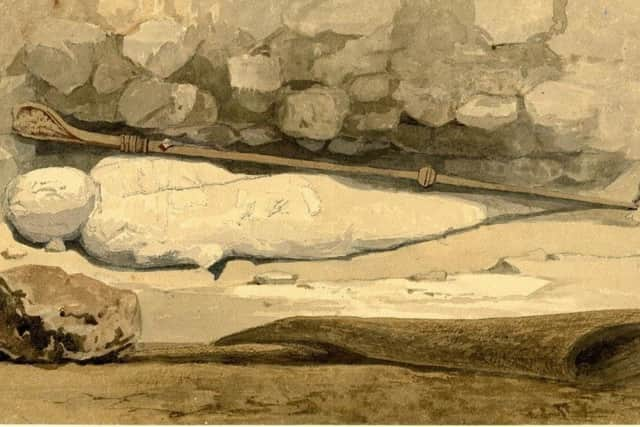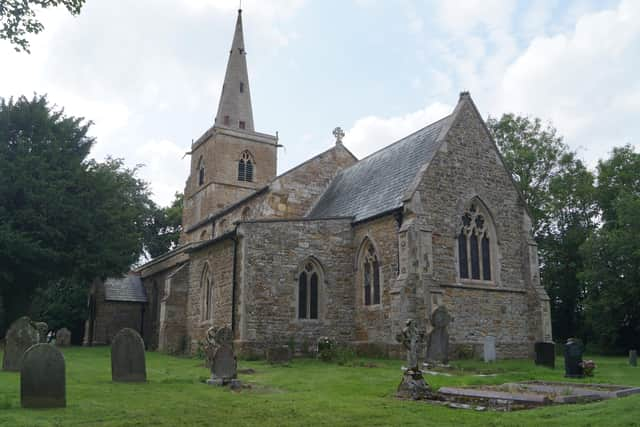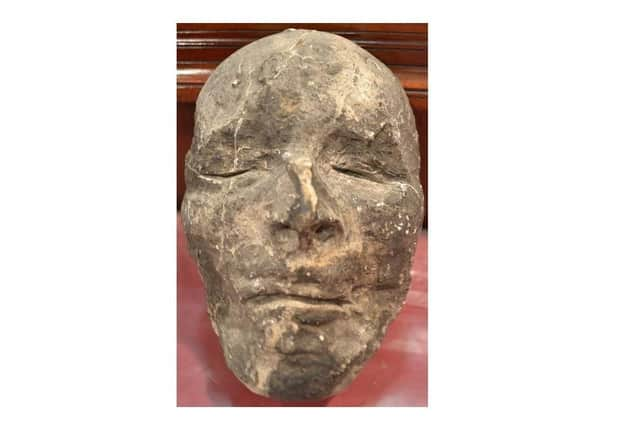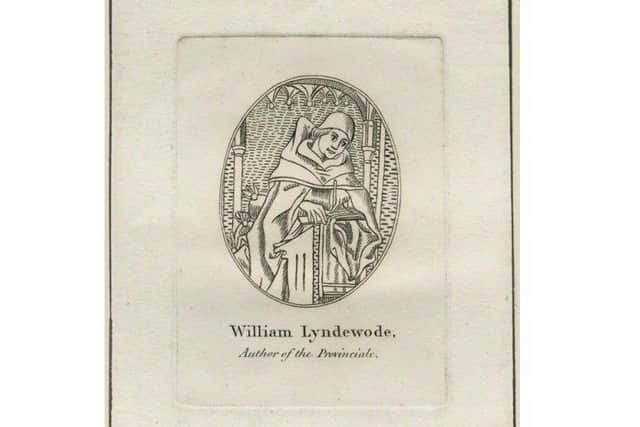Significant findings on Linwood bishop, buildings and deer park


church:
Since my last articles – on plans to raise money for essential repairs to St Cornelius Church at Linwood and research in to its history and those associated with the church – a lot of things have developed.
We have received a £4,000 grant for St Cornelius Church from the Church of England Gateway fund, which was less than the amount we applied for and leaves us £6,000 short of the target.
Advertisement
Hide AdAdvertisement
Hide Ad

We have also been very lucky to be one of the three charities chosen for the Market Rasen Tesco Store charity, to run until March 31, so if you are shopping at Tesco, please support our appeal with your token given each time you shop.
I have also been very lucky to find two people who are working with me to transcribe the history of the church compiled by Geoffrey Swalwell (1931) and carry out research into the Lynwode family.
We have also visited the archives in Lincoln where the staff were very helpful in guiding us through a large number of resources available to the public and signposting us to other resources held by the council and other bodies.
I wrote previously of the importance of William Lynwode, but as we dig further into his history it becomes more apparent of his importance to the monarch, not only in this country but across Europe.
Advertisement
Hide AdAdvertisement
Hide Ad

We have found copies of his death mask and the drawings of his coffin (Medieval Art A. Barton)which was found during the refurbishment of St Stephen in the Palace of Westminster, London.
Although the cask was not named, there was a crosier laid across his body and the body was wrapped in cloth in such a way that is only found in the burials of royalty or high ranking officials; this signified the position of a bishop.
The body was later reinterred in the north cloister walk of Westminster Abbey.
By chance, I watched a programme regarding the medieval period and one of the first maps compiled of the British Isles.
Advertisement
Hide AdAdvertisement
Hide Ad

The map is known as the Gough map, named after the collector who had obtained a copy and donated it to the nation.
It is the oldest recorded map known of the country dating back to the 1300s and shows the main tracks as red lines, with prominent buildings shown on the map in each listed town.
The interesting item was the importance of St David’s Cathedral in Wales, second only to Westminster Abbey and a site of national pilgrimage.
This is the place William Lynwood ended his days, as Bishop of St David’s, and would appear to be not only in recognition of his importance, but also maintain a facility which was second in importance only to the Abbey.
Advertisement
Hide AdAdvertisement
Hide AdAs we saw before, William was held in high esteem by two kings and the church itself.
The role of Viscount was one of the later awards to be bestowed on wealthy people and again Linwood has the honour of John Beaumont being the first person to be appointed to this role by Henry VI in 1440.
The role was mainly to administer justice and collect taxes.
He later became the sixth Baron Beamount.
We suspected that there had been a deer park in Linwood and this has been confirmed.
Advertisement
Hide AdAdvertisement
Hide AdKing Henry III granted permission to Elias De Rabayn to hold two bucks and ten does to stock his deer park, which was situated to the left of the manor house.
The remains of the dykes which enclosed the manor can be seen on the aerial photograph in the archives to the right of the road passing through Linwood from Lissington.
To the West of the manor was a causeway that linked the two settlements of Linwood, crossing the stream, which on the ancient maps shows the position of a sheep wash.
The Doomsday Book also mentions that the lords of the manor held shares in a mill, which we feel may have been situated on the same stream and is currently being investigated.
Advertisement
Hide AdAdvertisement
Hide AdThere is evidence that there was a smithy by the Methodist church in Linwood and we have had sight of the plans that were drawn up in 1883 for Francis Conway Gordon to build the new manor house and stables.
He borrowed £5826.17s 14d to construct it and it still stands to this day.
I mentioned that we thought that there was a link with the Linwood area of Christchurch in New Zealand, this has now been confirmed by the school archivist, as the school logo carries three lime trees adopted from a village of Linwood Market Rasen.
Apart from the comments, no one knows why.
There does not seem to be any direct link, as the founder – a Joseph Britain – originated from Bristol, emigrating to New Zealand in the 1800s and naming his residence and the area Linwood.
Advertisement
Hide AdAdvertisement
Hide AdOne point that has worried us was that the Doomsday Book referred to ownership of the church being one third by Alfred of Lincoln and one third by Durand Malet, so the question is who owned the remaining third.
Going back and consulting the Doomsday Book and other source documents, we have established there is, in fact, a third manor which may be the third owner, contributor to the church.
Hopefully we will have a definitive answer in the next update.
My thanks go out to John Boulton for his work retyping the history book and other research, as well as keeping me on task, and to Jill Vernon for her help and support in supplying information and acting as a critical friend.
Advertisement
Hide AdAdvertisement
Hide AdIf there is anyone who would like to help, we are looking for a person to build our website and there are also various areas that we need to carry out more research on.
However, if you simply want to become a friend of the church, then I would be happy to talk to you.
I can be contacted by email at [email protected] or call 07875 072880.
Alternatively, make contact through the St Cornelius Facebook page.